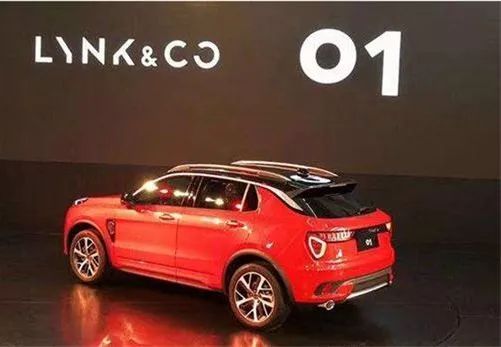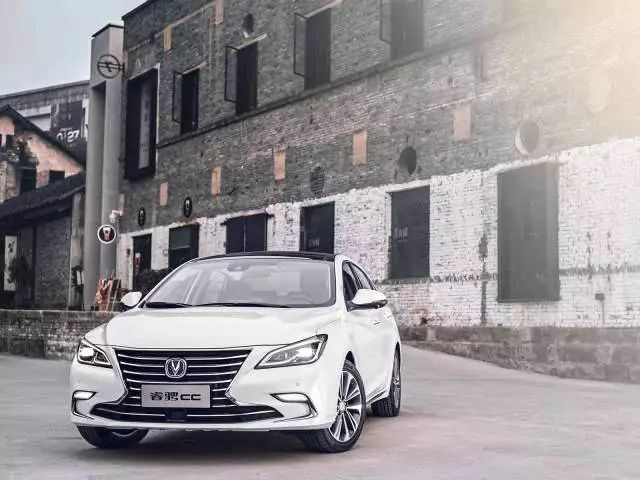At present, there is still a lack of a system with complete systems and rich technical reserves in its own brands. The development of most enterprises relies on short-term outbreaks of market demand. It is foreseeable that after the end of this year, the ranking of China's own brand will be further adjusted. On July 11, the China Association of Automobile Manufacturers released the latest sales data. From January to June this year, the overall sales volume of Chinese automobiles was 1,406,600, an increase of 5.57%; the sales volume of passenger cars was 11,775,300, an increase of 4.64%. From January to June, Chinese brand passenger cars sold a total of 5,109,100 units, an increase of 3.43%. It seems that the growth rate of Chinese brand passenger cars is lower than the overall growth rate of the overall passenger cars. “The growth rate of independent brands is low.†Cui Dongshu, secretary-general of the National Passenger Car Information Association, said in an interview with the Economic Observer that there are two main reasons for this trend. First, the overall domestic automobile consumption market is in a downturn; Yes, the trend of skyrocketing SUV market began to cool down, and many of its own brands rely on this market segment, which also caused the overall trend of independent brands to be cold. However, in conjunction with sales data from the National Passenger Car Information Association and various car companies, the Economic Observer reported statistics on the sales performance of the top eight independent car companies in 2017 and the first half of 2018, except for Changan Automobile. After falling 10.8% and Great Wall Motor's 2.34% year-on-year growth, the other 6 companies exceeded the average growth rate of 3.43% of their own brands. Among them, SAIC passenger cars increased by 53.7%, Zotye increased by 45%, Geely increased by 44%, and BYD increased by 21%. In the first half of this year, only Geely maintained a substantial growth among the three independent first echelons with annual sales exceeding one million. In the first six months of this year, the total sales volume of Geely Automobile reached 766,000 units, a year-on-year increase of 44%, and completed 49% of the annual sales target of 1.58 million units. At the same time, its profit also has a year-on-year increase of about 50%. Other companies are struggling, including Haima, BAIC, Changan, etc., sales have declined significantly. In the first camp of this independent brand, the gap between Changan, Great Wall and Geely has widened. In the industry's view, in addition to the opening of policies, more stringent fuel consumption regulations, new energy subsidies, technological changes brought about by intelligent network and autopilots, and restructuring of the industry chain, as well as emerging travel modes The impact of the traditional business model, etc., makes the independent brand in the competition, the gap is more obvious. The competition and elimination of independent brands in 2018 is even more intense. High-end brands become bright spots “High-end products and new energy are the main contents of independent brand transformation.†Cui Dongshu summarized the development path of independent brands in recent years. Judging from the transcripts in the first half of this year, the new energy vehicles of their own brands have become the collective “defectsâ€, and the success or failure of the high-end transformation largely determines the year-on-year growth of sales and the final ranking. Taking Geely as an example, Geely Bo Yue, which is targeting high-end sales, has sold more than 20,000 vehicles for 19 consecutive months and sold 22,000 vehicles in June this year. The sales volume of the Lectra 01, which was built by Geely Heavyweight, reached 9247 in June. The cumulative sales volume in the 7-month listing has reached 52,000, which is the brand foundation for the Lectra 02. However, the high-end of the Great Wall and Chang'an is not so smooth. The Great Wall's WEY performed poorly and directly affected its performance. In the first half of this year, Great Wall Motor sold a total of 471,000 vehicles, a year-on-year increase of 2.34%. Among them, the Haval brand sold 325,000 units in half a year; the WEY brand sold 77,000 units in half a year, with an average monthly sales volume of nearly 13,000 units. WEY's upward breakout path will also take time to appear. Before Changan, the CS95 breakout high-end basic announcement failed, and Changan is currently planning high-end brands. In addition, Chery's high-end brands are also being planned. In the first echelon, Changan Automobile is currently in the midst of a transformational pain. In the first half of the year, the overall sales of Changan Automobile was not satisfactory. In the first half of the year, sales volume was 467,000 units, down 10.8% year-on-year. Changan’s mid- to high-end sedan Rui Wei CC sold only 2,528 units, showing a downturn. However, its cumulative sales of new energy vehicles was 31,000. In the second echelon, SAIC and GAC, as the leaders, continued to exert their strength. In the first half of this year, the sales volume of GAC passenger cars was 268,000, a cumulative increase of 6.9%, while the sales volume of SAIC passenger cars (Roewe + MG) reached 359,000, an increase of 53.67%. In addition, in the first six months of this year, BYD Auto sold 220,000 vehicles, an increase of 21% year-on-year. Among them, the sales volume of new energy vehicles was 71,000, a year-on-year increase of 106%. Chery Group sold 343,000 units in the first half of the year, an increase of 8.8%. In the third echelon, most of them are in a downturn in sales. For example, Haima Motor sold a total of 41,000 vehicles in January-June, down 42.31% year-on-year. However, the “FAW†brand's own brand achieved overall reversed results. The Pentium brand finally achieved sales of 47,000 units, the Junpai brand achieved sales of 12,000 units, and the Senya brand achieved 21,000 units. It is worth mentioning that the only luxury car red flag in its own brand has sold 9,363 vehicles in the first half of the year, of which the sales volume in June exceeded 3,000 units, and the growth momentum is very obvious. Zotye, previously known as the “skin rulerâ€, sold a total of 154,000 units in January-June, a year-on-year increase of 45%. In addition, the performance of the Dongfeng Department's autonomous passenger cars is not optimistic, and the sales of its various brands are not satisfactory. In the first half of this year, the independent brands of the BAIC Group, which had experienced substantial growth in the past two years, continued to stay at a low level. The brands including Changhe, Beijing Auto and Beiqi Magic Speed ​​were all in a downturn. In addition, Huatai, Bispeed, Lufeng, Han Teng, Huachen, Sichuan Steam Wild Horse and other brands are facing the market breakthrough. In particular, the magic speed and specific speed, sales continued to decline this year. On July 12, the Economic Observer reported that the company had issued a notice of 40 days of suspension. "It’s not a question of living well, but a question of survival." An industry insider said. Multi-faceted "sniping" to survive For independent brands, the competition in the second half will be even more fierce. First of all, starting from the second half of the year, new car manufacturers will enter the delivery phase. Although it is mainly electric vehicles, it will also divert the current market share of its own brands. With the Chinese government's tax cuts, including vehicle manufacturing and parts and components, there is a large tax cut, which means that the joint venture brand has more room for price down. In addition, due to tariff cuts, ordinary joint venture brands are also affected by the price of luxury cars, which will affect the living space of independent brands. On the other hand, most of the profits of self-owned brands are currently subsidized by new energy vehicles. Since 2018, subsidies for new energy vehicles have been greatly reduced, which is very obvious in the first half of this year. Subject to the reduction in subsidies, the profits of self-owned car companies will drop sharply, which will put pressure on enterprises in the future development. More importantly, the future competitive environment of independent brands will not become easier due to the requirements of fuel consumption targets and future “four transformationsâ€. From a global perspective, the trend of new carization (electricization, intelligence, networking, and sharing) is unstoppable. In the first half of this year, Geely Automobile released the "iNTEC" smart technology brand; Chery released the smart brand "Chery lion CHERYLION" strategy; plus the "i-pilot" (Smart Navigator) independently developed by Great Wall Motor, Changan Automobile The "In-Call" intelligent driving system and the Chang'an "654 Strategy" have all ignited the competition of independent brands in the field of intelligence. Currently, the automotive industry is embarking on a spontaneous coalition. A representative case is the joint venture between BYD and Changan Automobile. In July this year, the two companies announced the joint establishment of a joint venture company that mainly produces and sells new energy power batteries. In terms of new car companies, FAW Group has invested in the company, and Sing Point has formed a cooperation with BAIC. A new partnership between enterprises is taking shape. Of course, independent brands still have a lot of room for growth in both domestic and overseas markets. In the first six months of this year, Chinese brand passenger cars accounted for 43.39% of the total domestic passenger car sales. Although the share fell by 0.51 percentage points from the same period of the previous year, it was still more than twice as high as the second German brand share. In the industry's view, China's own brands are relatively low, in connection with the share of other country brands in the domestic market. The data shows that car brands in Germany, Japan, South Korea and France account for more than 50% of sales in the country, while Japan and South Korea have a market share of more than 80%. Looking at the mature countries of automobiles, the average domestic market share of domestic brands is 62.2%, so that Chinese brands still have a lot of room for growth. More importantly, the share of self-owned brands in the global market is currently 13%, which is a huge gap between Germany and Japan. At present, the Chinese brand is the only one in Germany, Japan, the United States, South Korea and France, and the only one in which the local sales volume is greater than the overseas sales. But this will be the goal of a medium- and long-term independent brand in the future. "At this stage, it is still dominated by elimination. The elimination process will not be very fast, but it is already accelerating," one analyst pointed out. At present, there is still a lack of a system with complete systems and rich technical reserves in its own brands. The development of most enterprises relies on the short-term outbreak of market demand. It is foreseeable that after the end of this year, the ranking of China's own brand will be further adjusted. There will be new faces in the first echelon and the second echelon of the self-owned brand. Of course, there may be a sudden “falling down†phenomenon in the sales of the brand.
buy euro modern custom table top household wok lpg double two 2 plate flip range hob cooker kitchen cooking Gas stove 2 burners,
household gas stove, table Gas cooker ,tabletop gas stove,countertop gas stove,table stand gas stove.
table gas cooker ,tabletop gas stove,countertop gas stove,table stand gas stove Guangdong Puda Electrical Appliance Co., Ltd. , https://www.pokaeleca.com






